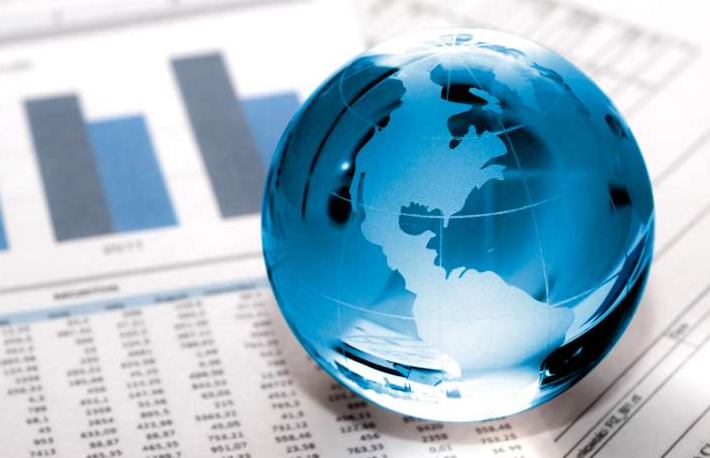

Economists and investment strategists are pretty much in line with respect to intensifying Coronavirus risks over the short term, with however less uniformity of view in terms of the medium term ramifications for the global economy.
Source: Bloomberg via GARP
(Bloomberg) — A raft of new coronavirus cases in numerous countries outside China over the weekend has redoubled concern about the ability of the illness to spread, and potential economic impact.
South Korea’s Kospi dropped as much as 3.8% after the country’s count of cases rose quickly to 763, and the government raised its infectious-disease alert to the highest level. Italy’s government imposed a lockdown on an area of 50,000 people near Milan and took other measures as infections exceeded 130. Iran reported an eighth death with 43 cases.
That’s all on top of the impact on hardest-hit China, where millions of firms face potential collapse if banks don’t act, though China’s top leaders said in a statement after a meeting on Friday that they will exercise more flexibility in monetary and fiscal policy.
Read: China Will Let Non-Local Residents Leave Wuhan: Virus Update
Here’s what strategists and investors are saying about the developments.
Normal by July?
“More near term panic will weigh on risk, but panic is necessary to increase containment odds. Credit markets appear to recognize that,” said Dennis DeBusschere of Evercore ISI. “EISI’s Survey team asked investors about the impact of the outbreak and the vast majority of respondents see both the risks as understated and expect U.S. Treasury yields were likely to decline by 25 basis points (to about 1.3%). 80% of investors expect supply chains to return to near-normal by July though.” (The survey was published on Feb. 17.)
Hard to Pick Bottom
“With cases of COVID-19 still rising, it is hard to tell when manufacturing will bottom, potentially setting the stage for prolonged weakness,” said Vishnu Varathan, head of economics and strategy at Mizuho Bank Ltd. in Singapore. He added, “this is a safe-haven trade — you’re getting rid of risk in your portfolio.”
Moving to Neutral
“The virus spreading to Italy and Iran is finally spooking some investors on what has mostly been a mostly Asian situation,” said Rick Bensignor, president of Bensignor Investment Strategies. “With the SPX having reversed lower right from its weekly risk level at 3,394 — and a daily negative divergence now in place — I lower our tactical levered long position down to pure neutral. We’re also exiting our long Nikkei trade with a small loss.”
‘Intense’ Hunt for Yield
“We have been advocating a more balanced position between bonds and equities in recent weeks since we have little clarity on how the outbreak would evolve. It seems like that the number of new cases in China is coming down, with the daily number of recovered patients higher than the new confirmed cases. This may encourage the Chinese authorities to permit more workers to return to work and limit disruption to production,” said Tai Hui, chief market strategist for Asia at JPMorgan Asset Management. “The decline in bond yields also meant investors’ search for yield will remain intense. This underpins our constructive view on EM fixed income and developed market corporate debt.”
Risk Aversion
“Risk aversion is likely to intensify over the near term given the sharp rise in cases in Korea, Italy and elsewhere,” said Mitul Kotecha, senior emerging markets strategist at TD Securities in Singapore. “Markets are becoming increasingly focused on the risk of more prolonged economic damage than had been previously expected. Supply chains are becoming increasingly exposed, while services and tourism are suffering across many countries.”
China Weakness
“Policymakers are trying to get the economy going again but we think weakness is likely to persist well into the fourth quarter,” said Win Thin, global head of currency strategy at Brown Brothers Harriman, of China. “Stimulus is in the pipeline but it won’t be enough to totally offset the growing impact of the virus.”
Asymmetric Dollar Strength
“U.S. dollar strength will likely be asymmetric,” said Citigroup Global Markets Asia-Pacific chief economist Johanna Chua. “Given the low cost of capital globally and comforting commitments from authorities to render further support, high yielding emerging-market FX (Indian rupee, Philippine peso) may not hurt as much and is likely to outperform the low yielding EM FX especially in Asia, where the Singapore dollar, Thai baht, Korean won etc. are also the most impacted on economic activity — and hurt on their current accounts. In spite of being a high yield FX, the Indonesian rupiah may have some more unwind of stretched long positioning before settling down.”
Need to See More
We still need “to see the numbers that can provide a little bit more direction as to where things are going,” Jingyi Pan, market strategist at IG Group, told Bloomberg TV in Singapore. “Some of these high-frequency indicators are perhaps indicating that economic activity hasn’t much resumed yet, so these are the things we have to see coming back online.”
Headline Risk
“We view this as headline risk. Our base case view is that coronavirus continues to represent demand delayed and not demand destroyed,” said Steve Chiavarone, a portfolio manager with Federated Investors.
Gold Rally
“U.S. real rates have plummeted during the virus scare, with 10y TIPS yields — already quite low at just 6.5 basis points above zero on January 17 — are today more than 15 basis points below zero,” and John Velis, FX and macro strategist at BNY Mellon. “Since gold tends to trade inversely to real rates, the rally in gold will probably persist as long as the latter stay under pressure.”


